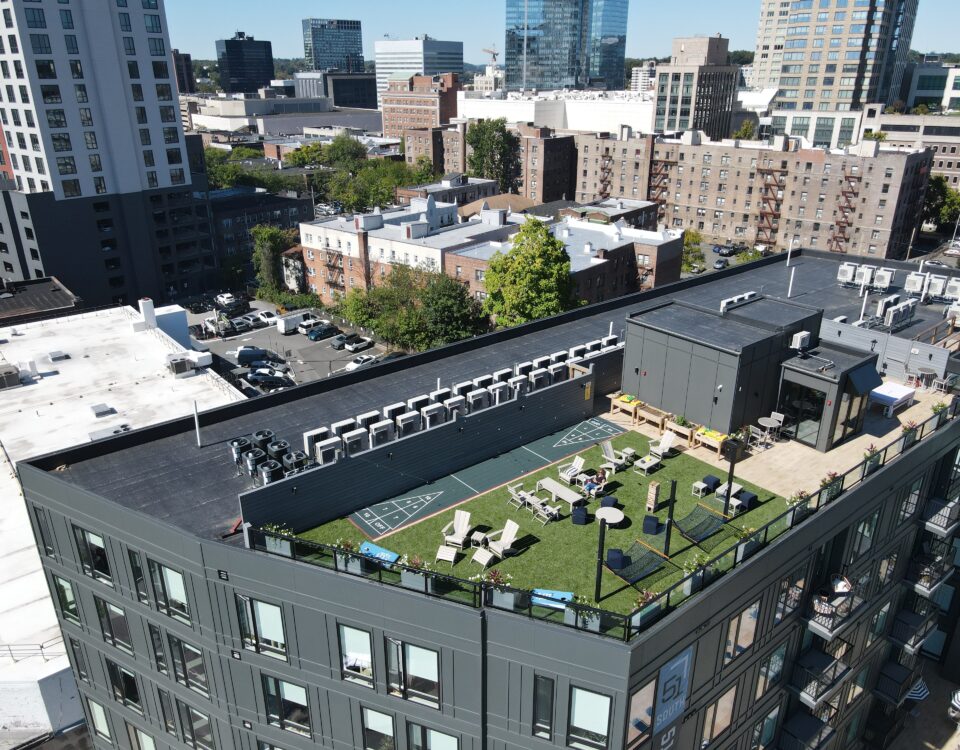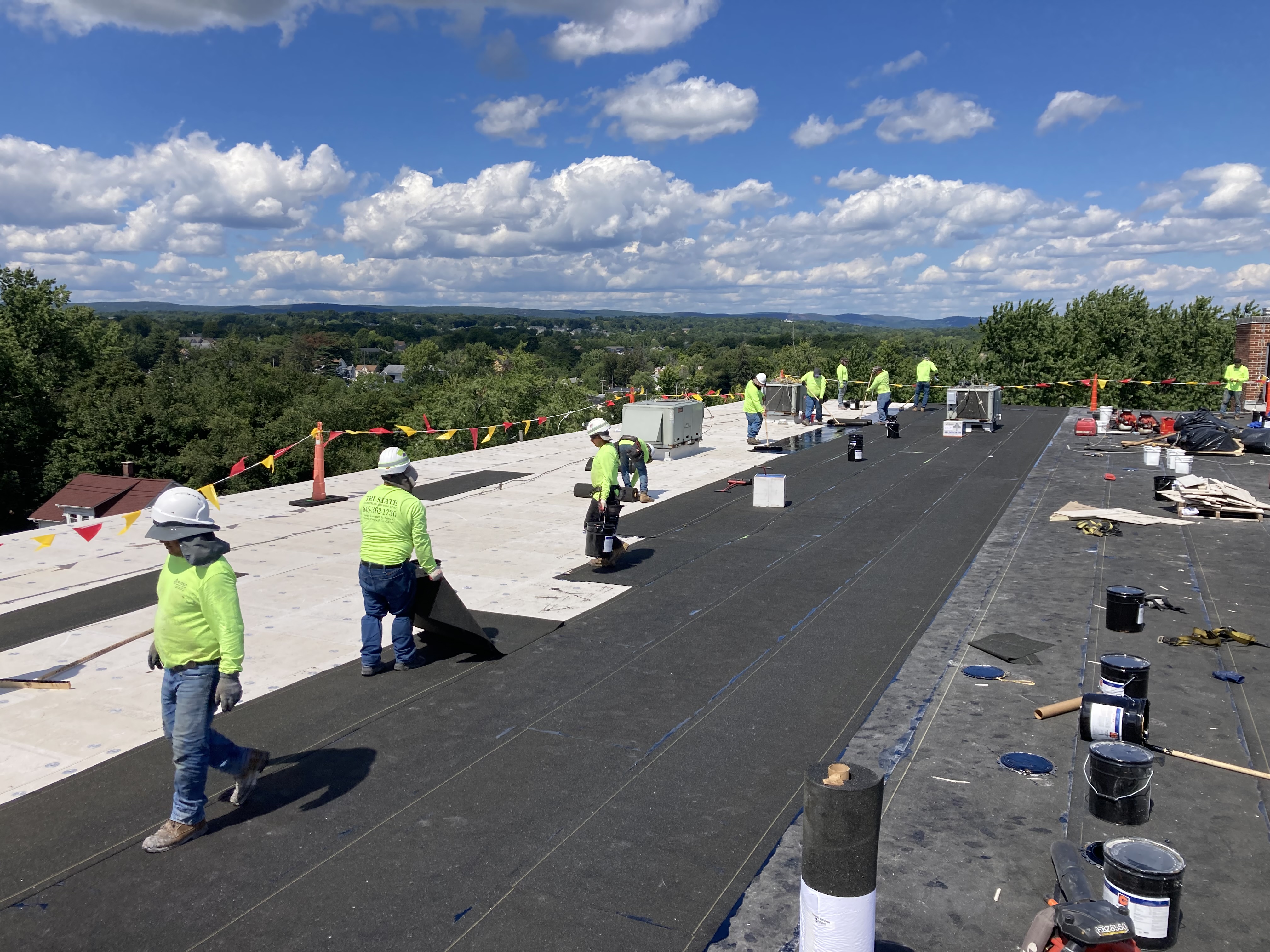
TPO vs. EPDM vs. PVC: Which Flat Roof System Performs Best in Cold Weather?
When it comes to protecting your commercial property through New York’s tough winters, your roofing system plays a bigger role than you might think. Not all flat roofing materials perform the same in freezing temperatures, snow, and ice. The three most popular single-ply roofing membranes—TPO, EPDM, and PVC—each have their strengths and weaknesses when it comes to durability, flexibility, and cold-weather performance.
At Tri-State Commercial Roofing Corp., we install and service all three systems, and we’re breaking down how they compare so you can make an informed decision for your building.
_______________________________________________________________________________________________________________________________________________________________________________________________________
TPO Roofing (Thermoplastic Polyolefin)
Overview:
TPO is a single-ply, heat-weldable roofing membrane which comes in a variety of colors. It’s one of the most popular roofing choices for commercial buildings because it helps reduce cooling costs and offers strong resistance to UV and chemical exposure when light-colored membranes are used, and can reduce heating costs when a dark-colored membrane is installed.
Cold Weather Performance:
TPO performs well in colder climates when installed correctly, but its flexibility in freezing temperatures depends heavily on the membrane’s formulation and quality. Lower-quality TPO can become brittle in extreme cold, increasing the risk of cracks or seam failures. Luckily for our customers, Tri-State is only certified by the biggest and highest quality manufacturers in the nation.
Pros:
- Welded seams provide strong watertight protection
- Resistant to punctures and chemical exposure
- Can be installed over an existing roof.
Cons:
- Can become stiff in sub-zero temperatures
- Proper installation is critical to prevent seam failure
Best For:
Buildings seeking energy savings and especially in mixed or moderate climates.
_______________________________________________________________________________________________________________________________________________________________________________________________________
EPDM Roofing (Ethylene Propylene Diene Monomer)
Overview:
EPDM, often called “rubber roofing,” has been used on commercial roofs for decades. It’s known for its flexibility, durability, and ability to handle temperature extremes.
Cold Weather Performance:
EPDM performs exceptionally well in cold weather. Its natural rubber composition remains flexible even in sub-freezing temperatures, reducing the risk of cracking or shrinking. It’s also resistant to thermal shock—rapid temperature changes that can stress other materials.
Pros:
- Excellent flexibility and cold-weather resistance
- Proven performance in harsh climates
- Long lifespan (20–30+ years)
- Low maintenance
Cons:
- Dark surface absorbs heat (can raise cooling costs in summer)
- Seams are typically glued, not heat-welded, which can be weaker than TPO or PVC seams
Best For:
Buildings in colder regions that experience frequent freeze-thaw cycles and require long-term durability.
_______________________________________________________________________________________________________________________________________________________________________________________________________
PVC Roofing (Polyvinyl Chloride)
Overview:
PVC roofing membranes are similar to TPO in appearance but offer higher chemical resistance and more consistent long-term flexibility. They’ve been used successfully for decades in industrial, restaurant, and manufacturing environments.
Cold Weather Performance:
PVC stays flexible in cold weather and performs well under snow loads and icy conditions. It’s particularly effective on roofs that experience standing water, as the welded seams are watertight and strong.
Pros:
- Excellent chemical and grease resistance
- Strong, heat-welded seams
- Highly reflective and energy-efficient
- Maintains flexibility over time
Cons:
- Higher upfront cost than TPO or EPDM
- Can shrink slightly over time if not properly installed
Best For:
Buildings with exposure to chemicals or grease (restaurants, factories) or those requiring long-term, watertight protection.
_______________________________________________________________________________________________________________________________________________________________________________________________________
So, Which Roofing System Wins for Cold Weather?
If your building is located in the Northeast or another cold-weather climate, here’s our recommendation:
- Best overall cold-weather flexibility: ✅ EPDM
- Best for energy efficiency & reflective surface: ✅ TPO
- Best for chemical resistance & long-term durability: ✅ PVC
Ultimately, the best choice depends on your building type, roof traffic, and budget. The most important factor is professional installation—a well-installed roof system will always outperform a higher-end material installed incorrectly.
_______________________________________________________________________________________________________________________________________________________________________________________________________
Schedule a Winter Roof Evaluation
If you’re considering a new roof or want to make sure your existing system is ready for the next freeze, our experts can help.
Tri-State Commercial Roofing specializes in flat roof installation, repair, and maintenance across New York, New Jersey, and Connecticut.
We’ll evaluate your existing roof, recommend the best materials for your climate, and provide a long-term maintenance plan to protect your investment.
_______________________________________________________________________________________________________________________________________________________________________________________________________
👉 Contact us today to schedule your free roof evaluation or maintenance consultation.



